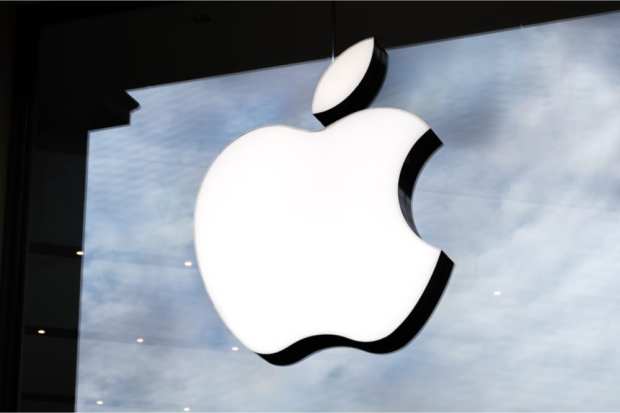The iPhone Vs Prime Day And The Battle For The Forward-Shifted Holiday Season

The wait for the first official look at the iPhone12, it seems, is nearly over. Invites for Apple’s second big digital event this fall, hosted out of Cupertino, are officially out in circulation, according to reports, and Apple is expected to release the iPhone12 at the “Hi, Speed” event going live next week on Oct. 13.
The announcement in 2020 is a bit late, as Apple’s new flagship phone is normally announced at its September event, but this year production delays created by COVID-19 pushed back the iPhone’s announcement to its own separate event.
The big expectation of the day is that Apple will roll out (among other things) its first ever 5G-capable phone in the 12 — joining Google, Samnsung, Motorola and Huawei as a phone maker offering up the high-speed option. Said upgrade has prompted speculation among analysts that more than an average number of consumers will choose to upgrade their phones this year — kicking off a 5G supercycle of device upgrades.
A supercycle-creating phone would in a more normal year be kicked off with a big, splashy and attention-generating physical event hosted in the Steve Jobs auditorium at Apple’s Cupertino HQ — but of course these aren’t normal times. This time around the “Hi, Speed” event, like nearly everything else this year, has been forced to go virtual due to the coronavirus pandemic. The event will be broadcast online at 10 a.m. PST on Oct. 13 (1 p.m. EST).
And virtualization of the kick-off event, however, will not be the only strange element of the iPhone 12 release. This year Apple will have to deal with some counterprogramming competing for airtime during its announcement of the new phone. Because October 13 isn’t just the iPhone 12 introduction day, it’s also Prime Day.
The Hunt For Mid-October
Prime Day, like the iPhone 12 launch, is also not happening when it normally would — the Amazon-invented holiday is usually slated for early July. But supply chain disruptions were so profound during the spring and early summer months that Prime Day was rescheduled out of necessity.
As that news emerged, analysts noted that counterprogramming attempts by Amazon’s competitors would likely start popping up soon — and Target and Walmart have both in fact stepped up with announced sales to counter the Amazon shopping event. But both retailers maintain their choice has less to do with what Amazon is doing, and more to do with what consumers are reflecting they want out of their holiday shopping experience.
“Over the past six months, our customers have been shopping differently, and we expect that will continue into the most important shopping season of the year: the holidays,” said Scott McCall, executive vice president and chief merchandising officer at Walmart U.S. “We’ve heard from our customers that many plan on starting their holiday shopping well before Black Friday, and that they’re looking for gifts that fit their current lifestyle. So, we’ve adjusted our strategy to adapt to these new shopping preferences. We’re offering more of what they want now, earlier than ever, and all at the best prices.”
Catching Up And Pulling Forward
We imagine when analysts were forecasting Prime Day counterprogramming they weren’t really thinking about Apple holding its big phone announcement event on the same day.
But 2020 is an unusual year with a holiday season that seems to be persistently creeping forward. Prime Day and iPhone day aren’t exactly direct competitors — Apple’s event will last for an hour or two, and Prime Day is 48 hours long, so doing both is certainly a possibility. Nor is there any concern that consumers will blow their Prime Day shopping budget buying up an $1,000+ iPhone, since the world is only meeting the iPhone 12 next week. If past is prologue, the phones won’t go on sale during Prime Day and consumers will have to wait a few weeks to actually make the purchase.
Still Big Tech firms in general, and Apple in particular, generally like to have consumers’ undivided attention when they are announcing the latest iteration of the next big thing not having then clicking in and out to make sure they aren’t missing a good lightning deal at the moment.
But, looking at the data going into the holiday quarter — the company’s showcase sales season each year — Apple may simply want its flagship product and main revenue generator out into the world by the official start of the holiday shopping season, which is increasingly looking to be Prime Day next week.
It’s going to be a very digital holiday shopping season this year — that’s what the CDC is recommending and PYMNTS consumer survey data is increasingly indicating as consumers remains concerned about their safety and are settling more comfortably into their digital lives.
And as the spendiest season of the year is spinning up, capturing those very digitized consumers early and getting them converting early in the season is looking increasingly critical. Apple may not want to have to compete with Amazon for consumer attention this holiday season, but it surely wants to remind those consumers who will be flocking online for the first of Amazon’s two scheduled October shopping events that it too has something that should be on their holiday shopping list — even if that product won’t actually be available for purchase for another few weeks into the holiday season.
Because the holiday shopping rush is getting underway early this year — which means firms can either act fast, or get left behind.
